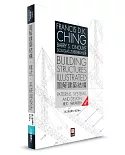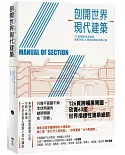Aim of this Book
Along with the population and building booms of Hong Kong in the 1960s, the problem of building dilapidation was being exacerbated. Buildings in state of dilapidation will not only pose
problem in terms of structural failure, hygiene, fire safety but also bring along hazards like object falling from height which would cause injury to innocent passer-by. On 29 January 2010, a
five-storey residential block in 45J Ma Tau Wai Road collapsed and claimed lives of 4 residents. To the Hong Kong Government and citizens alike, this tragedy not only tolled the death bell for
realising the potential danger of aged and dilapidated buildings, but also catalysed the awareness of the importance of keeping the condition of building in proper manner and the necessity of
implementing mandatory building inspection and rectification scheme in Hong Kong. As at 31 December 2014, there were 43,163 numbers of private domestic and non-domestic buildings in Hong Kong
among which 23,797 were over 3 storeys in height. Out of these 23,797 buildings, 15,581 buildings, equivalent to approximately 65% of the total stock, were with age 30 or above. Without
proper maintenance, these buildings are no difference to bombs and landmines in the city.
To arrest the long-standing problem of building dilapidation, the Buildings Department commenced the registration of Registered Inspectors (RI) for the Mandatory Building Inspection Scheme
(MBIS) on 30 December 2011. They are building professionals coming from Architects, Surveyors and Engineers. The MBIS has been fully implemented from 30 June 2012. Under the MBIS, 2000 number
of buildings aged above 30 would be selected annually and the owners are required to employ the Registered Inspector for carrying out the inspection and rectification works. This book provides
a critical examination on the current private building stock and existing professional workforce available for implementing the MBIS. This information can be used to project the future private
building stocks that would be falling into the MBIS and thence demand of professional workforce to implement the MBIS. Therefore, this book is not only useful to policy makers, building
professionals and property owners, but also to researchers and students in this field.
Chapter 1 gives us an overview on the history and latest development of building control in Hong Kong. Chapter 2 provides the statistics and analysis on the existing stock and distribution of
private buildings and population density among the 18 Districts of Hong Kong. Chapter 3 reviews the historical development of building inspection scheme in Hong Kong and the scope of works
under the MBIS. Chapters 4 and 5 analyse the existing stock of private buildings and provide projection of future building stock in the coming 10 years. Chapter 6 provides a review on the
requirement and administrative procedures for building professionals registering as Registered Inspectors. Chapter 7 evaluates the existing supply pool of building professional workforce
available for the MBIS. Chapter 8 presents the findings from the web-based questionnaire administrated to building professional and provides a projection on the demand and supply of registered
inspectors in coming 10 years. Last but not least, Chapter 9 offers recommendations on how to implement and deliver the MBIS effectively.























